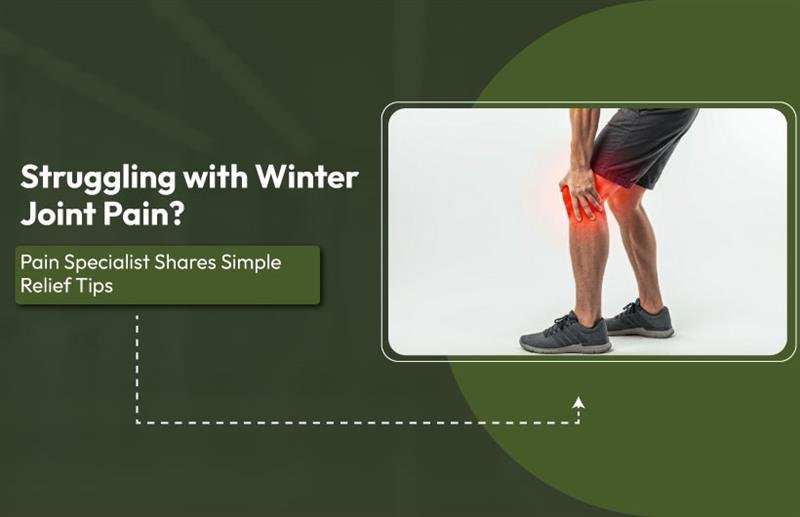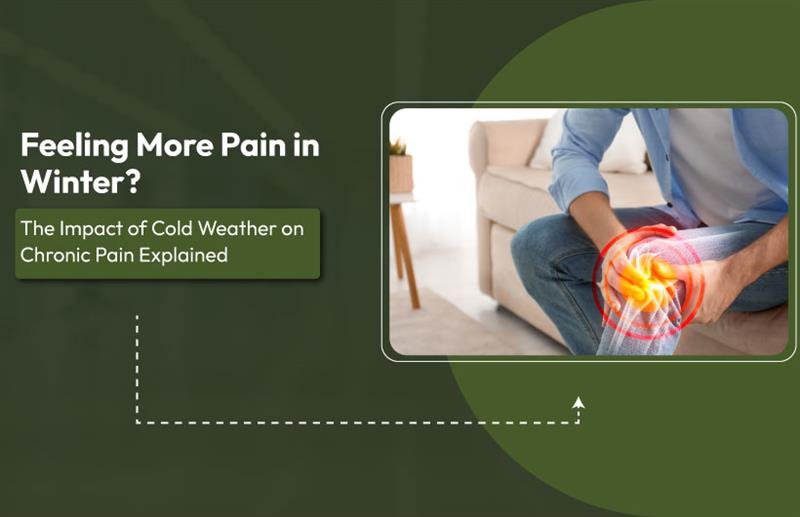As the cooler months settle in, many people notice increased stiffness or discomfort in their joints. The drop in temperature, reduced physical activity, and cold air can all contribute to this seasonal joint pain. In this blog, we’ll uncover why winter joint pain occurs, share effective home remedies to ease the discomfort, and explain how a Pain Management Clinic in Ahmedabad can help you find lasting relief and improved mobility.
Why does my joint pain seem worse in winter?
It’s a common experience — joints that feel fine during warmer months often start aching as the temperature drops. Research suggests several contributing factors:
- Cold temperatures cause blood vessels to constrict (vasoconstriction), reducing blood flow to the extremities and joints, which can make them feel stiffer or more painful.
- Lower temperatures can also affect the synovial fluid — the natural lubricant inside your joints — making it thicker and less effective, resulting in reduced mobility and increased discomfort.
- Changes in barometric pressure or humidity may further influence joint sensations and pain levels.
- Reduced physical activity during colder months — as people tend to move, exercise, and go outdoors less — can weaken muscles and joints, leading to stiffness and soreness.
So, if you’ve been wondering, “Why does my joint pain get worse in winter?” these are the key reasons. Dr Megha Shah at Anamay Pain Clinic explains that while weather alone doesn’t cause joint problems, it can certainly intensify existing conditions.
How can I reduce joint pain in winter?
Here are some practical, home-based tips you can start using right away. They are particularly effective for easing mild to moderate joint discomfort during the colder months. Dr Megha Shah highlights that combining these methods with professional medical guidance can lead to better results.
- Keep warm & dress smart
Wrap up when you go out. Use layers, and don’t forget to cover vulnerable joints like knees, wrists and fingers. Keeping your body temperature stable helps reduce the shock of cold on your joints.
At home, consider a heating pad, a warm bath or even a warm shower before bed to relax your joints and muscles. - Stay mobile even indoors
It’s tempting to hibernate during cold weather, but staying active helps joint health. Gentle stretching, indoor walking, yoga or using a stationary bike are good options. The stronger and more flexible your supporting muscles are, the less strain on your joints. Dr Megha Shah advises regular movement as part of an overall strategy at Anamay Pain Clinic.
Also, after any time of being still (like sitting in one position for a long time), take a moment to stretch and get your joints moving. - Use heat and comfort measures
When a joint feels stiff or achy, applying heat helps increase circulation to the area and loosen things up. Warm packs (not too hot), a warm bath, or even warm socks/gloves can help.
Pair this with gentle movement for an even better effect. - Watch diet & weight
Extra weight puts added pressure on joints like knees and hips. Cold weather can lead to less activity and more comfort-eating, and that can impact joint pain.
Also, some foods have anti-inflammatory benefits: fatty fish (omega-3s), nuts, leafy greens, and colourful vegetables. Dr Megha Shah at Anamay Pain Clinic reminds patients that while diet alone won’t eliminate joint pain, it supports joint health and complements other measures. - Check your posture & avoid strain
Cold muscles are tighter and more prone to injury. So be mindful of how you lift, how you sit, how you move. If a joint is persistently painful, avoid heavy loads or repeated stress on it. If needed, get professional guidance from Anamay Pain Clinic on exercises to reinforce the surrounding muscles and protect the joint.
When should I see a pain specialist?
Joint pain isn’t always caused by cold weather — sometimes it’s a sign of an underlying condition that needs medical attention. A pain management specialist can help determine whether your discomfort is due to chronic joint diseases such as arthritis or osteoarthritis, nerve-related issues, or other causes.
Ask yourself:
- Is the joint swollen, red, or warm to the touch?
- Has the pain persisted for more than a few weeks or gradually worsened?
- Is the pain interfering with your daily activities or mobility?
If your answer is yes to any of these, it’s time to see a pain management specialist. Ignoring persistent or worsening joint pain can delay proper treatment and recovery.
Treatments are personalised — not all pain requires surgery. Specialists use minimally invasive, targeted therapies designed to relieve joint and muscle pain effectively.
Conclusion
Winter joint pain doesn’t have to stop you from living an active and comfortable life. Simple lifestyle changes—like staying warm, exercising regularly, maintaining good posture, using heat therapy, and eating a balanced diet—can help reduce stiffness and improve mobility. But when the discomfort becomes persistent, understanding the Role of a Pain Management Specialist is essential.
At Anamay Pain Clinic, Dr Megha Shah, an experienced Pain Management Specialist, provides personalised treatments to help patients overcome chronic pain, restore flexibility, and regain confidence in their daily activities. this winter, don’t let joint pain take control—take proactive steps and seek expert guidance for lasting relief. Your joints will thank you for it.







